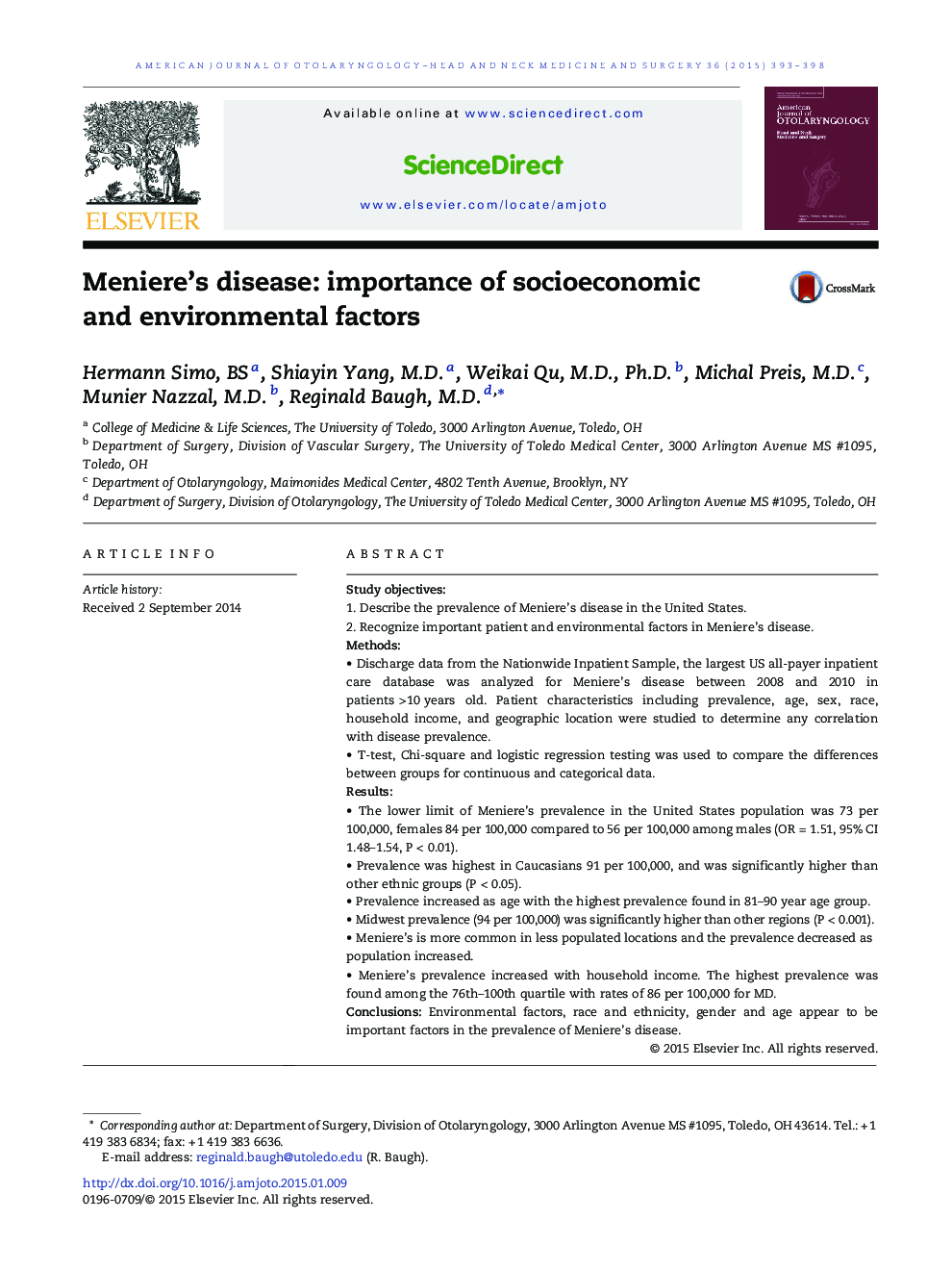| Article ID | Journal | Published Year | Pages | File Type |
|---|---|---|---|---|
| 4103542 | American Journal of Otolaryngology | 2015 | 6 Pages |
Study objectives1. Describe the prevalence of Meniere’s disease in the United States.2. Recognize important patient and environmental factors in Meniere’s disease.Methods• Discharge data from the Nationwide Inpatient Sample, the largest US all-payer inpatient care database was analyzed for Meniere’s disease between 2008 and 2010 in patients > 10 years old. Patient characteristics including prevalence, age, sex, race, household income, and geographic location were studied to determine any correlation with disease prevalence.• T-test, Chi-square and logistic regression testing was used to compare the differences between groups for continuous and categorical data.Results• The lower limit of Meniere’s prevalence in the United States population was 73 per 100,000, females 84 per 100,000 compared to 56 per 100,000 among males (OR = 1.51, 95% CI 1.48–1.54, P < 0.01).• Prevalence was highest in Caucasians 91 per 100,000, and was significantly higher than other ethnic groups (P < 0.05).• Prevalence increased as age with the highest prevalence found in 81–90 year age group.• Midwest prevalence (94 per 100,000) was significantly higher than other regions (P < 0.001).• Meniere’s is more common in less populated locations and the prevalence decreased as population increased.• Meniere’s prevalence increased with household income. The highest prevalence was found among the 76th–100th quartile with rates of 86 per 100,000 for MD.ConclusionsEnvironmental factors, race and ethnicity, gender and age appear to be important factors in the prevalence of Meniere’s disease.
